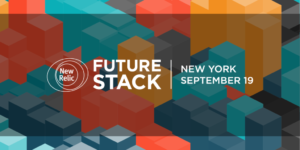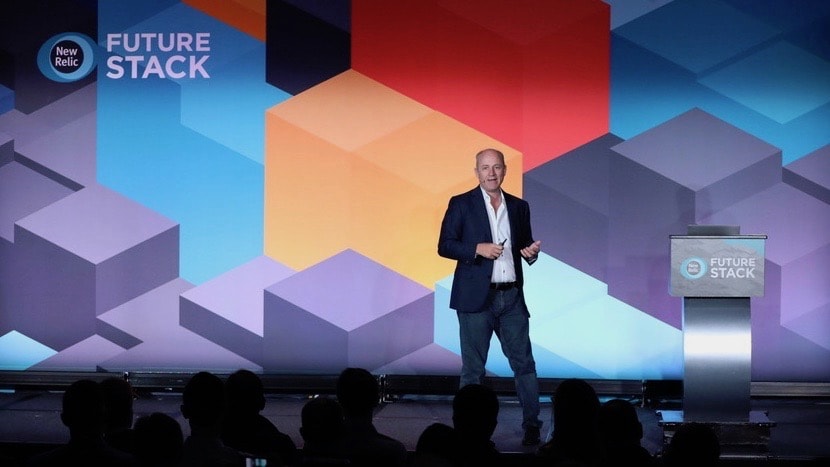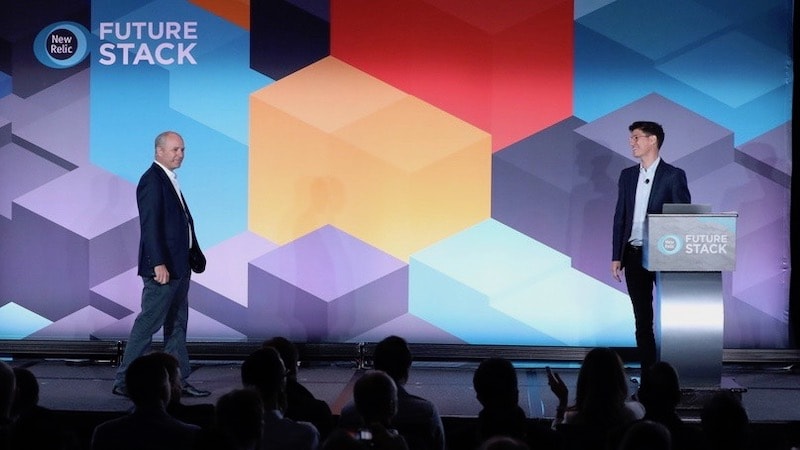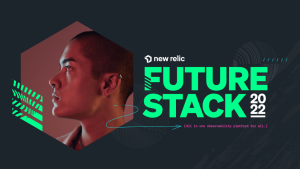When New Relic founder and CEO Lew Cirne took the stage at FutureStack19 in New York City this morning, he began his presentation by talking not about technology, but about magic.
 There’s something “magical” about the ability of software to create things seemingly out of nothing, Lew told the audience. And some of the most powerful software-magic today involves its ability to transform the very nature of how and why businesses operate, innovate, and compete.
There’s something “magical” about the ability of software to create things seemingly out of nothing, Lew told the audience. And some of the most powerful software-magic today involves its ability to transform the very nature of how and why businesses operate, innovate, and compete.
“Your software is your business,” said Lew, and therefore whether or not you measure it is no longer optional. “You have to observe everything in your software, and everything in the infrastructure that supports that software. Nothing that runs in production should go unmeasured.”
That’s why, Lew said, the term observability—“the practice of measuring everything that runs in production”—is becoming a household name in the industry. “What we call observability is really about getting visibility and collecting telemetry data about technology in four forms: metrics, events, logs, and traces.”
The challenge, he noted, is that all this huge amount of data is stored in many different places, and to make things even more complicated, often presented to you via a proliferation of disparate tools. “When I talk to our customers, I hear that you don’t want more tools—you want a platform,” Lew said. “Observability requires a platform.”

Defining observability: 3 key qualities
Such a platform, Lew said, is architected with three capabilities in mind, all of which support a sustainable, scalable, end-to-end observability strategy:
- Open: The platform can’t support just certain types of data or data flowing only from a single vendor’s toolset. Instead, Lew said, an open platform treats telemetry of any type, from any source, as “first-class data.”
- Connected. It’s not enough, he said, to simply serve as a repository for all of this data. The real value comes from visualizing relationships, making connections, and understanding dependencies.
- Programmable. Finally, and most important, you must be able to write software on it. Observability is only possible when businesses are free to adapt a platform to their own edge cases and unique requirements.
Evolving the New Relic One platform
Integral to New Relic’s vision for how to achieve true observability, Lew announced a half-dozen major new product releases, beta releases, and overarching capabilities, all of which build on the existing capabilities of the New Relic One platform.
- New Relic Metrics and New Relic Traces. A pair of products that traditionally collected data exclusively from New Relic’s own agent applications now employ a radically different approach, Lew explained. Today, by design, New Relic Metrics and New Relic Traces make it just as easy to collect metrics and tracing data from open, third-party sources just as easily as from New Relic’s own agents. “Before, people thought in terms of having to use our agents in order to use our products,” Lew said. “Today, you can go all-in with New Relic without using a single one of our agents.”
- New Relic Logs. Log data management is a new capability for New Relic. But as Lew pointed out, the requirements around collecting, managing, and bringing context to log data are a perfect match for the capabilities within NRDB, New Relic’s purpose-built database system. In fact, by leveraging what Lew referred to as “the world’s most powerful telemetry database,” users accustomed to waiting minutes for log queries to run on other tools can expect to get results in seconds from NRDB.

- New Relic AI. New Relic’s AIOps solution for busy DevOps, SRE, and on-call teams adds context to incident alerting and separates relevant alerts from the “noise” that causes serious problems for many teams—all within a tool that offers simplicity, ease of use, and high performance. “We’ve seen reductions of 80% in alert noise in tests with major customers,” Lew noted—a major advantage for identifying, responding to, and resolving high-priority incidents.
- Programmability. “It’s not a platform unless you can build software on it,” said Lew. New Relic One delivers on this requirement with access to the same tools New Relic’s own engineers use every day. Customers can build custom apps that connect observability data gathered from virtually any accessible source—including telemetry from open-source applications and data stores—and deploy these apps alongside New Relic’s own curated experiences.
- Open source apps. Open source code and support for open standards were common threads running through virtually every innovation on display during Lew’s keynote. But nowhere was that more apparent than during Lew’s walk-through of the dozen open source applications—some developed in a matter of hours—that showed the power of New Relic One as a programmable platform.
[Read our announcements overview post to learn more about all the new product capabilities that were introduced at FutureStack19.]
Since its initial release, New Relic One has provided a point of access, and a platform for establishing context and making the connections that contribute to true observability. “We’re all on a journey together to deliver more perfect software,” said Lew. “That’s what we’re here to do, and we believe the New Relic observability platform will get you there.”
Watch highlights from Lew Cirne's FutureStack 2019 keynote below:
Die in diesem Blog geäußerten Ansichten sind die des Autors und spiegeln nicht unbedingt die Ansichten von New Relic wider. Alle vom Autor angebotenen Lösungen sind umgebungsspezifisch und nicht Teil der kommerziellen Lösungen oder des Supports von New Relic. Bitte besuchen Sie uns exklusiv im Explorers Hub (discuss.newrelic.com) für Fragen und Unterstützung zu diesem Blogbeitrag. Dieser Blog kann Links zu Inhalten auf Websites Dritter enthalten. Durch die Bereitstellung solcher Links übernimmt, garantiert, genehmigt oder billigt New Relic die auf diesen Websites verfügbaren Informationen, Ansichten oder Produkte nicht.



